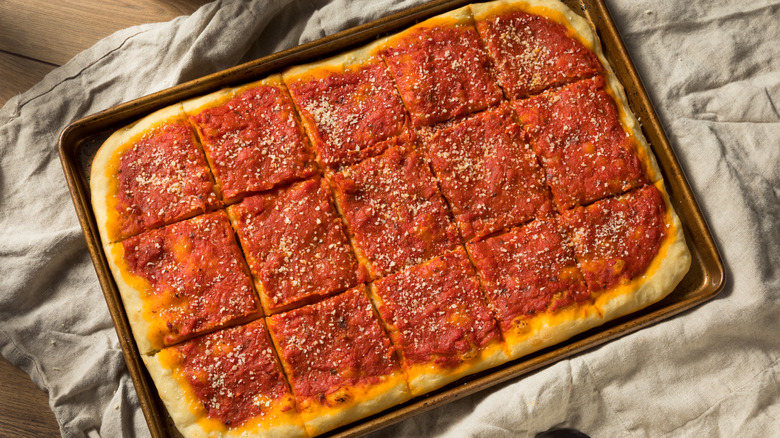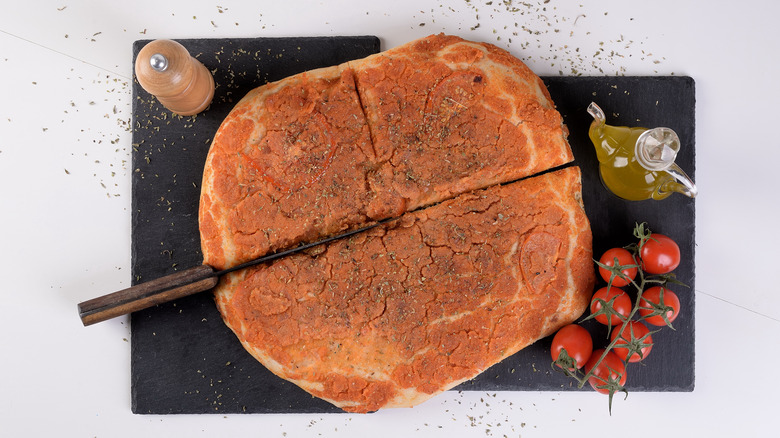What Makes Philadelphia's Tomato Pie So Unique
Pizza is a big deal in the United States. No matter what state you are from, or how rich or poor you are, pizza is an easy, cheap, and addictively delicious meal to have at birthday parties and on Friday nights. And there are so many kinds of pizzas, too! Chicago has the deep dish, New York-style has its thin crust, and Philly has tomato pie. Now, if you've never heard of Philly's classic tomato pie before now, maybe you're imagining a flaky pie crust filled with something that looks terrifyingly like tomato paste. We promise you, that's not the case. The truth is far more delicious.
Philadelphia's tomato pie is definitely one of the most unique variations of pizza we've seen here in the states because it doesn't have most people's favorite ingredient: cheese. Now, to some of you, a cheese-less pizza may sound scandalous, but in reality, it is more traditional than you can imagine.
Tomato this, tomato that
According to the Philadelphia Encyclopedia, tomato pie was introduced to Philly through Italian immigrants during the 19th and 20th centuries. The Italian population grew in Philadelphia extensively during that period due to continuous political instability in Italy. Immigrants fleeing to Philadelphia and the New World often could not afford much and the tomato pie was an easy way to fill a family's belly without breaking the bank.
The pie itself is based on the dish Sfincione Palermitano. Sfincione Palermitano loosely translates to "the thick sponge of Palermo" (a Sicilian city). It is fluffy, soft focaccia topped with tomatoes. Why doesn't this pizza have any cheese? Tomatoes and olives were more commonplace than dairy products in Southern Italy at the time this dish was invented (via Misya.Info).
Philadelphia Magazine celebrates the city's tomato pies and takes pride in their thick-crusted, rectangular pizzas. Bakeries today top them with tomatoes, anchovies, and herbs and bake them in wood-fired ovens.

